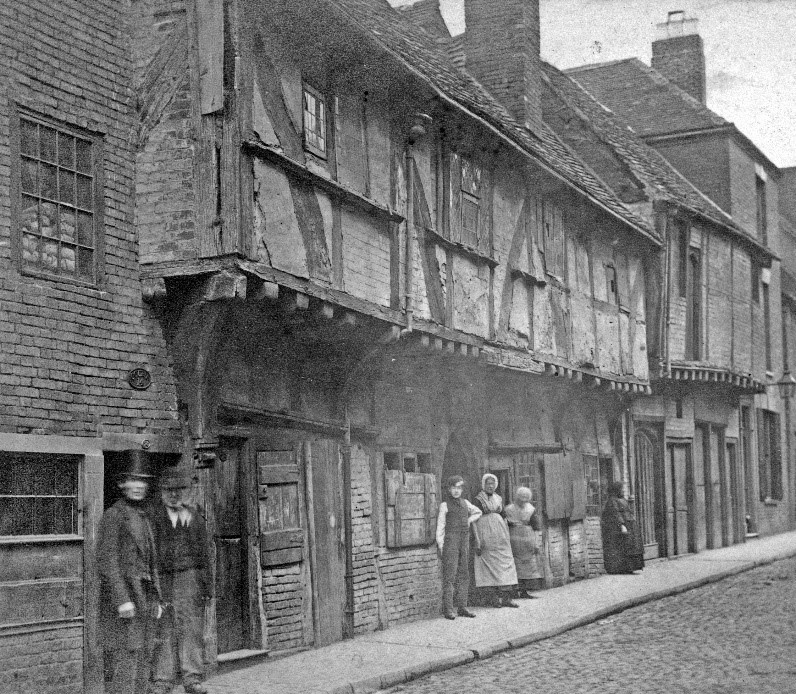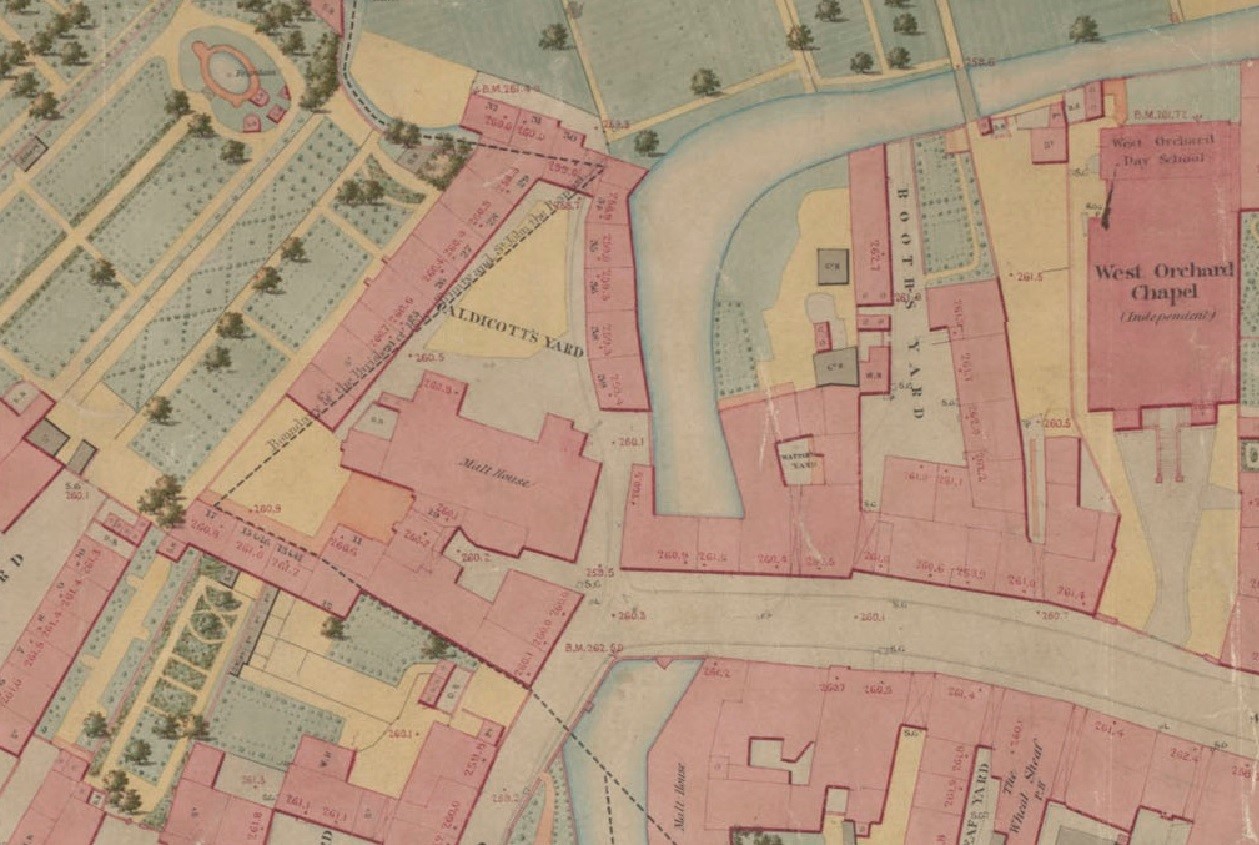Tales from the Archives: The Season of Sickness
30 July 2019
Robert from Coventry Archives delves into Coventry's "Season of Sickness" in 1849
In July 1849, Coventry established a local Board of Health and began to address the dismal situation of overcrowding, poor hygiene and disease that had become very much a part of everyday life in the city.

(Alms Houses at West Orchard 1855)
The new Boards had been created under the provisions of the Public Health Act of 1848 and one of its principal architects was Edwin Chadwick, who had also helped shape the provisions of the Poor Law some fifteen years earlier.
Chadwick believed that the best way to avoid the huge expense of providing relief for those who got sick was to improve the terrible circumstances in which they lived. He proposed that central government should take a much more active role in the provision of clean water and improved drainage; he also proposed that local councils be given the means by which to clear away refuse from homes and streets.
Coventry in the mid nineteenth century was a good example of Chadwick’s argument: the city was dirty, overcrowded and prone to regular outbreaks of disease such as cholera. From the Black Death in the fourteenth century, to the Council’s deliberations on how to “prevent the bringing of the plague and pestilence into this Citie” in the seventeenth (1), disease - despite all the attempts to combat it- was an inescapable part of life.
What exacerbated the problem in nineteenth century Coventry, however, was the rapid rise in the city’s population. It grew by ten percent between 1838 and 1848, and although housing was being constructed, much of it was of poor quality. The Lammas and Michaelmas lands beyond the city’s boundary could not be used for housing and private developers were building large numbers of houses in as small an area as possible to maximise the returns in rents; as a consequence, overcrowding and the problems associated with it became pressing issues.
William Ranger, appointed in 1849 to write a report on the state of the city’s health (2) cites the example of a property in Caldicott’s Yard (3) where he found “a man, wife, and five children, occupying a room twelve feet by six feet.” This situation was by no means uncommon. With people crowded into such meagre living quarters, the rapid spread of disease was only to be expected.
But although the city had always been prone to outbreaks of scarlet fever and typhus, it was another epidemic of cholera that finally compelled Parliament to pass the 1848 Act. Opinion on what caused cholera varied from one medical authority to another, and so did the means by which to treat it. Those more inclined to trust in God rather than medicine could always turn to the "Special Prayer" recited at church services during cholera outbreaks, when the congregation would call upon the Lord Almighty for forgiveness: "thine unworthy servants...who turn to thee, their only refuge, in this season of sickness and great mortality" (4)

(Detail from the Board of Health Map, 1851, showing Caldicott’s Yard at West Orchard)
The City formed a Cholera Relief Committee in response to this fresh outbreak but a hundred people had died by the time it was properly up and running. The epidemic was eventually contained but it proved to be expensive: nearly four thousand people applied for relief and the cost of providing medicines, food, blankets, nurses, and gratuities paid to surgeons, came to nearly six hundred pounds.
The local Boards established at the end of 1840s were not without their limitations, but they did prove to be important first step in the safeguarding of public health. And more legislation was to follow, heralding further improvements. At Coventry Archives, the evidence of some of this early work has been preserved: one of the more remarkable artefacts is the Coventry Board of Health map, prepared by the Ordnance Department. A detail from it, showing Caldicott Yard and the surrounding West Orchard, accompanies this post.
References:
1) Council Minute Book, 1635 – 1696, reference BA/H/3/17/2, Coventry Archives;
2) William Ranger, Superintending Inspector of the General Board of Health: “Report to the Public Body of Health on the City of Coventry,” 1849, reference 352.4, “Green Box” C2c Public Health, Coventry Archives;
3) Taken to be the Caldicott’s Yard at West Orchard, although there was another yard with the same name at Greyfriar’s Lane. The image is taken from the Coventry Board of Health Map, reference SLA/2/4/3/16, Coventry Archives;
4) Pamphlet, "Cholera: Special Form of Prayer," reference JN 614.49, Coventry Archives